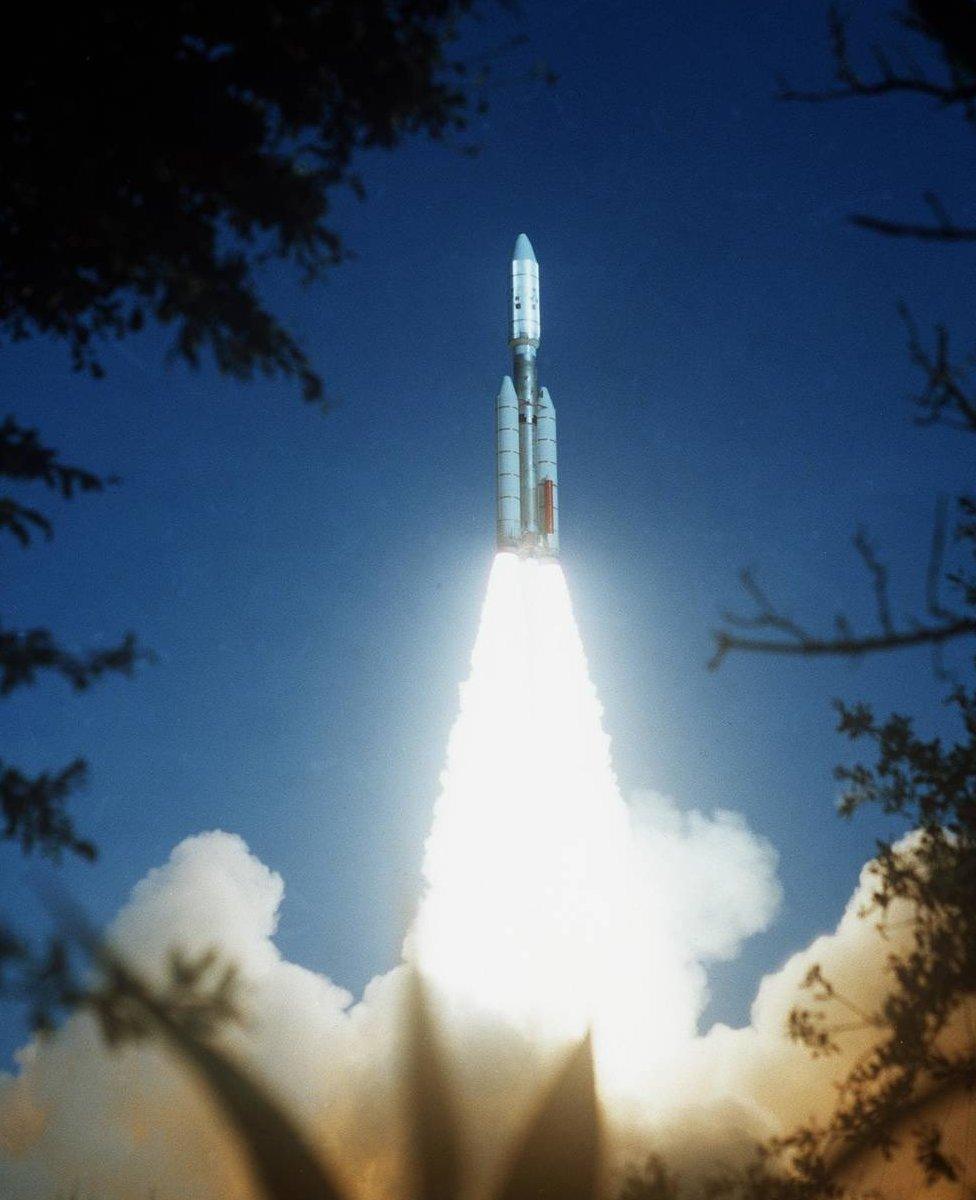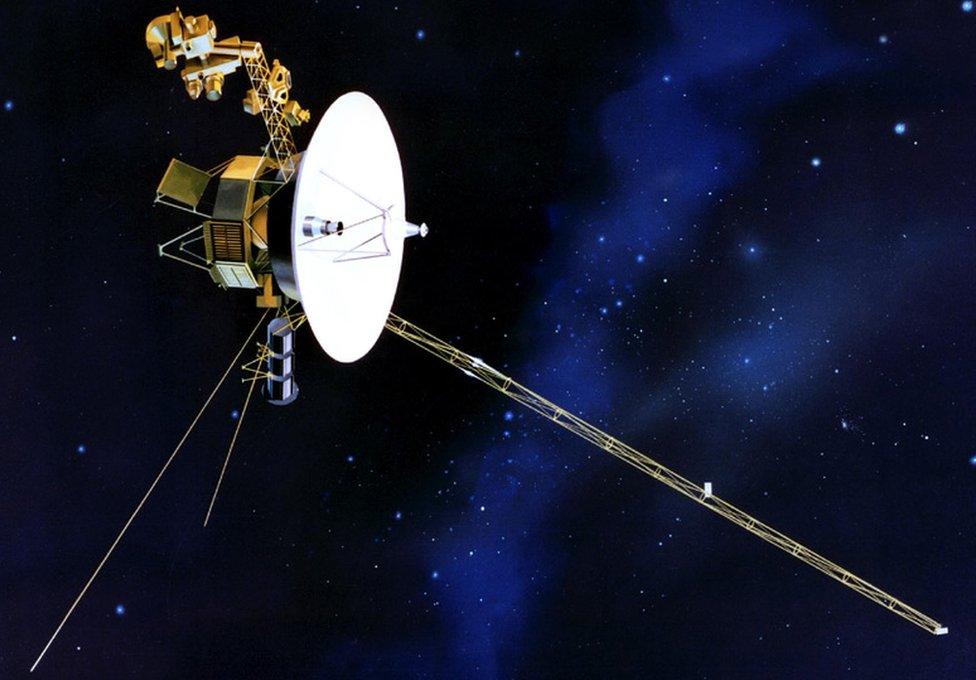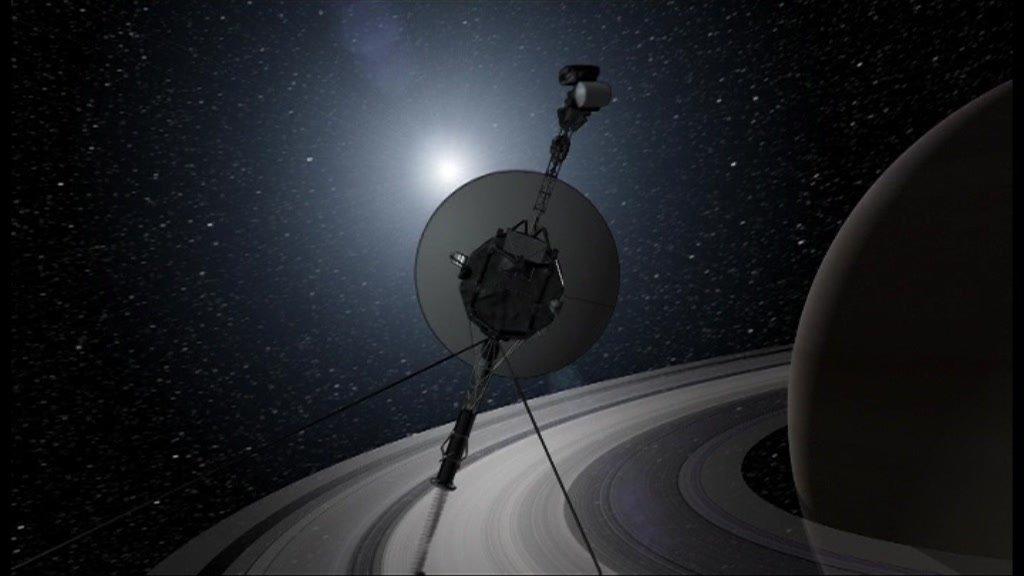NASA's Voyager 2 probe 'leaves the Solar System'
- Published

Voyager 2 launched 16 days before its twin, Voyager 1, in 1977
Voyager 2 has now 'left our Solar System'. Imagine that.
The second man-made object to leave our planet is now 11 billion miles from Earth, following behind it's sister spacecraft, Voyager 1, which is 6 years ahead of it.
The probe is estimated to be travelling at 34,000 mph.
The Voyager mission was launched in the 1970's, and the probes sent by NASA were only meant to explore the outer planets - but they just kept on going.

Voyager 1 and Voyager 2 launched from Nasa's Kennedy Space Center to explore the outer planets
Voyager 1 departed Earth on 5 September 1977, a few days after Voyager 2 and left our solar system in 2013.
Their primary objective was to survey the planets Jupiter, Saturn, Uranus and Neptune - a task they completed in 1989, almost 30 years ago.
Chief scientist on the mission, Prof Edward Stone, confirmed the landmark moment on Monday.
"We didn't even know how long a spacecraft could operate for," he added. "Now we're studying the very local interstellar medium."
It is expected that eventually the probe's power sources will eventually stop providing electricity at which point its instruments and transmitters will die.
But until then, long may the explorations continue. Keep up the good work, little space probe(s)!
- Published27 June 2012

- Published13 September 2013

- Published16 July 2015

- Published13 September 2013

